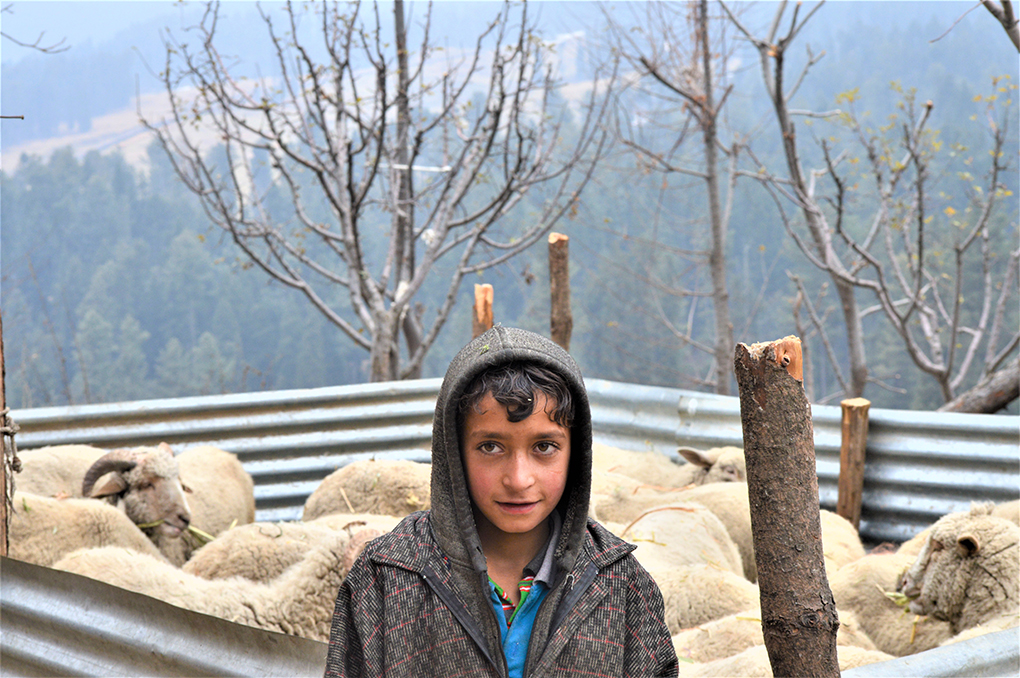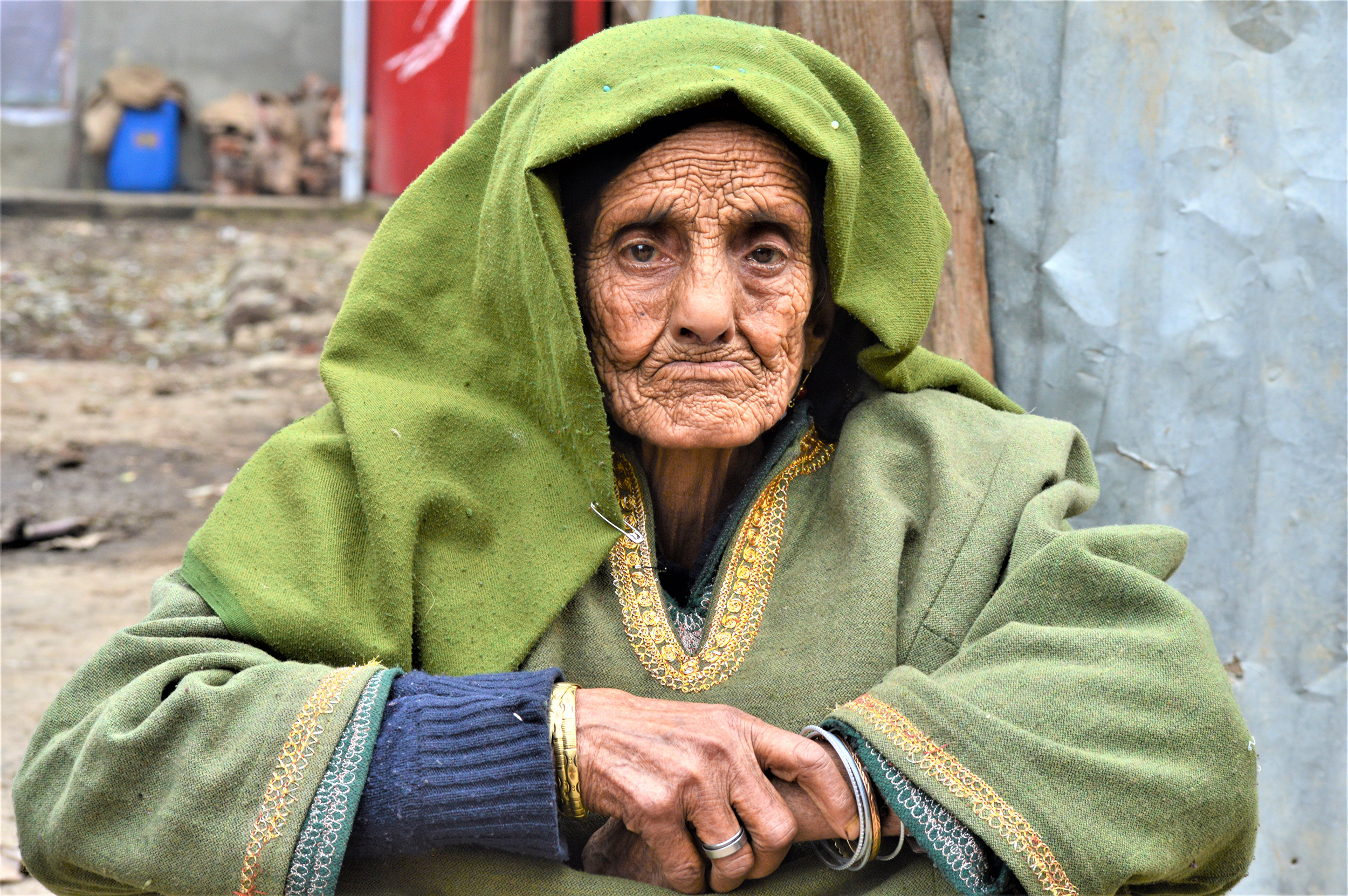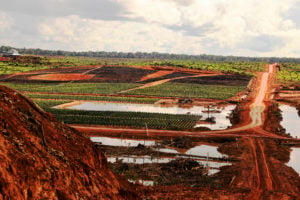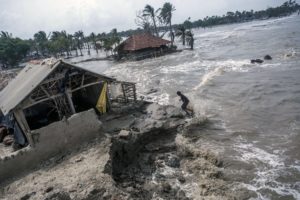Zooni Begam is 108 years old. She has lived her whole life in Zilsidara, a village inside a forest in the Pir Panjal mountain range in central Kashmir’s Budgam district. Her family is one of dozens in the village that have received eviction notices and warnings from the Jammu and Kashmir Forest Department in recent weeks. Thousands of other families are similarly affected across Jammu and Kashmir in northern India.
“Where will I go?” Begam said, as she squatted on the ground outside her house and chatted with other villagers. “I was born here. My parents also lived here. We have been living here for ages. How can the government make us homeless all of a sudden?”
Begam’s house has been declared illegal, along with thousands of structures on forest land across Jammu and Kashmir. In the first week of December, the Jammu and Kashmir Committee on Forest Encroachments published a list of “encroachers”. It claims that more than 63,000 people are illegally occupying 15,000 hectares of forest land.
The committee was constituted on September 19, 2020 by the J&K Forest Department in response to a 2017 public interest litigation filed by a non-governmental organisation in the Jammu and Kashmir High Court.
Homes and livelihoods at risk
There are 32 forest divisions in Jammu and Kashmir. Those with the largest areas of “encroached” land are Ramban with 2,017 hectares, Rajori with 1,974 ha, Poonch with 1,473 ha, Anantnag with 1,496 ha, Shopian with 1,027 ha, Pir Panjal with 655 ha, Kamraj with 578 ha and Jammu with 500 ha.
Indigenous peoples with special protection under India’s Constitution – called Scheduled Tribes – form a large proportion of the forest dwellers. Scheduled Tribes account for about 1.5 million people in Jammu and Kashmir – 12% of the total population, according to the latest census in 2011. Most of these are nomadic pastoralists – Bakarwals and Gujjars.
They depend on the forests for their livelihoods and shelter as most do not own land or property. Bakarwals primarily rear goats and sheep while Gujjars rear cattle – activities that can partially or completely stop if communities are deprived of forest resources.
See: Pakistan’s centuries-old Bakarwal community faces dual threat
Also see: Medicinal plants disappearing in Jammu and Kashmir
There will be more people like Begam if the forest department continues to issue notices and evict forest dwellers. In the village of Kanidajan in Budgam there are reports that the forest department cut down hundreds of the villagers’ fruit trees and some huts on December 5, after accusing them of encroaching upon forest land. Ironically, this happened a day after the regional government formed Tree Authorities, a monitoring group to preserve trees in Srinagar and Jammu.
In recent weeks videos of houses being demolished in Kashmir in the middle of a Himalayan winter have gone viral.
“I have never been so petrified and worried about losing my livelihood as I am today,” said Nazir Kalukhair, an elderly nomad who lives in Kalakote, a village in Rajori district.

There have been years of controversy around this issue, which have come to the fore in recent weeks. Political parties have openly supported or opposed the implementation of The Scheduled Tribes and Other Traditional Forest Dwellers (Recognition of Forest Rights) Act, 2006 in Jammu and Kashmir. That is why this act (also known as Forest Rights Act or FRA), widely hailed for empowering indigenous people to safeguard their livelihoods and forests, has not been implemented in Jammu and Kashmir in the past 14 years.
The political parties that were not interested in implementing the FRA would cite Jammu and Kashmir’s semi-autonomous status. But that status, under which the former state could choose whether to implement central laws or not, was withdrawn by Indian government in August last year.
See: Indian government looks to acquire land in Kashmir
As a result, the FRA has been directly implementable in the region since October 2019. Under this, traditional forest dwellers are protected against forced displacements and have the right to grazing, access to water resources and access to forest products other than timber.
On November 18, 2020 the J&K government said that it would implement the FRA. Local newspapers reported on December 3, 2020 that the regional government has constituted a sub-committee chaired by the commissioner secretary of the Forest, Ecology & Environment Department “to devise a suitable review mechanism, criteria and indicators for monitoring the process of recognition and vesting of forest rights along with appropriate monitoring formats.”
But forest dwellers and activists are not reassured, given the evictions of recent weeks.
Raja Muzaffar Bhat, a prominent civil rights activist, said, “The government, on one hand, is assuring tribal people and other forest dwellers that they will be given their rights under the Forest Rights Act, but, on the other hand, the actions like issuance of eviction notices and chopping of fruit trees of poor people is defeating the essence of this great legislation.”
He added, “The forest department is trying its best to dispossess the forest dwellers of their land, which they have been cultivating for several generations. If these people are evicted from their villages what is the purpose of implementing FRA 2006 in Jammu & Kashmir?”
Officially recognised by J&K government
In the village of Zilsidara, where Begam along with most of the inhabitants have been declared illegal occupants, basic facilities exist. These include a road, electricity and piped-water supply. The villagers told The Third Pole that these services were provided by the government years ago, in acknowledgement of the fact that their families have lived there for generations.
A forest official who spoke to The Third Pole on the condition of anonymity said that this has encouraged the forest dwellers (other than nomadic people like the Bakarwals and Gujjars) to keep living in these areas. “It is true that most of the areas where the forest department claims that people have illegally encroached upon forest land have been officially recognised by successive governments by extending facilities such as roads, electricity and piped water to those areas.”
Now, it might be very difficult for the government to deny what previous administrations have allowed for decades.
The only reason the forest department has given for sending the notices is that these people have encroached upon forest land.
Salim Malik, director of tribal affairs in Jammu and Kashmir, said that if forest dwellers other than Scheduled Tribes have lived in a certain area for three generations (or 75 years) and possess evidence in support of their claim, they qualify to live there under the FRA.
As for the Scheduled Tribes, the act says that if a person or family from that population lived in a forest area before December 2005 and has documentation proving that they have been living in that area, then they cannot be evicted.
Malik said that he did not understand why people are receiving notices when the government has constituted a committee to look into this issue. “As the District Development Council elections are near completion, the process of submitting the complaints (individually or at community level) will start soon and then they will be taken up at higher levels.”









